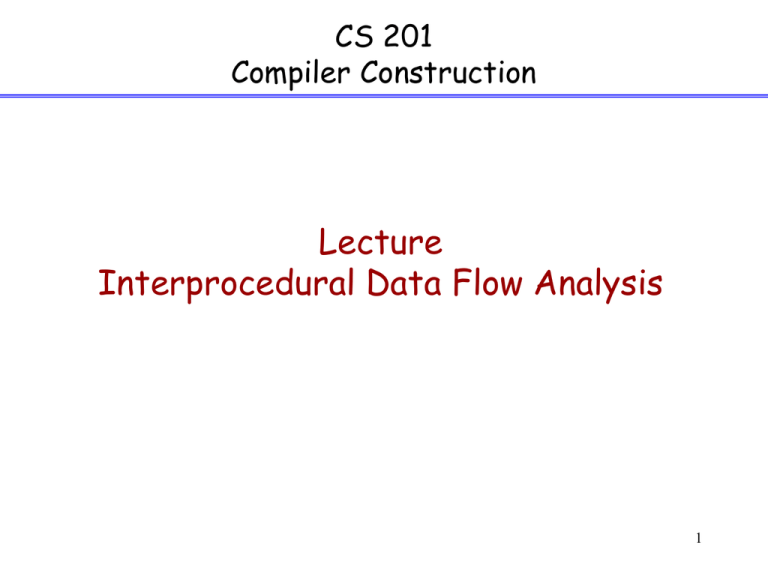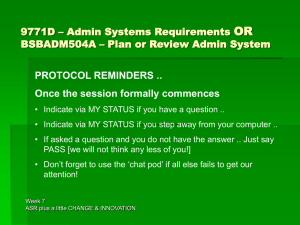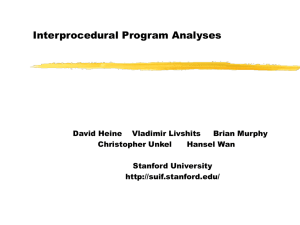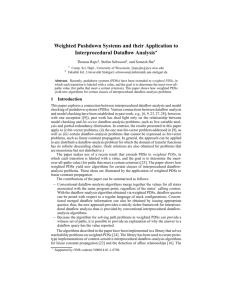PPT
advertisement

CS 201 Compiler Construction Lecture Interprocedural Data Flow Analysis 1 Intraprocedural Analysis • Individual procedures are analyzed in isolation; • worst-case assumpltion are made while processing call sites. Example: X = 3; P(); …=X Does definiton X=3 reach this point? Yes Is X a constant? No We assume that P() does not kill any definition for reaching definitions analysis and we assume P() kills all constants that reach the call P(). 2 Interprocedural Analysis By considering interactions between calling and called procedures, analyze the whole program. Challenges • Scoping Rules • Aliasing due to reference parameters Procedure P (f1,f2) f1 = … f2 = … …. = f1 where if f1 defined ? f1 =… what about call P(X,X)? Interprocedural Analysis Challenges contd… • Calling Context – cannot represent call-return using simple control flow edges. Invalid paths are created by simple control flow edges causing definition of X at statement 1 to reach use of X at statement 4. Handling Calling Context Various Approaches: 1. Procedure Inlining – replace the call by procedure body. Drawbacks – – Code size increases Recursion causes problems 2. Call String Approach – add calling context information to data flow values by tagging them with call-return history. 5 Handling Calling Context 3. Functional Approach Two phases • Analyze effect of procedure invocation independent of calling context find a summary transfer function for the entire procedure • Analyze each procedure using summary functions for all called procedures 6 Functional Approach 7 Functional Approach Contd.. 8 Functional Approach Contd.. 9 Functional Approach Contd.. 10 Functional Approach Contd.. 11 Functional Approach Contd.. 12 Example: Available Expressions 13 Example: Available Expressions 14 Example: Available Expressions 15 Example: Available Expressions Summary functions 16 Example: Available Expressions 17 Sample Problems Interprocedural Data Flow Analysis 18










